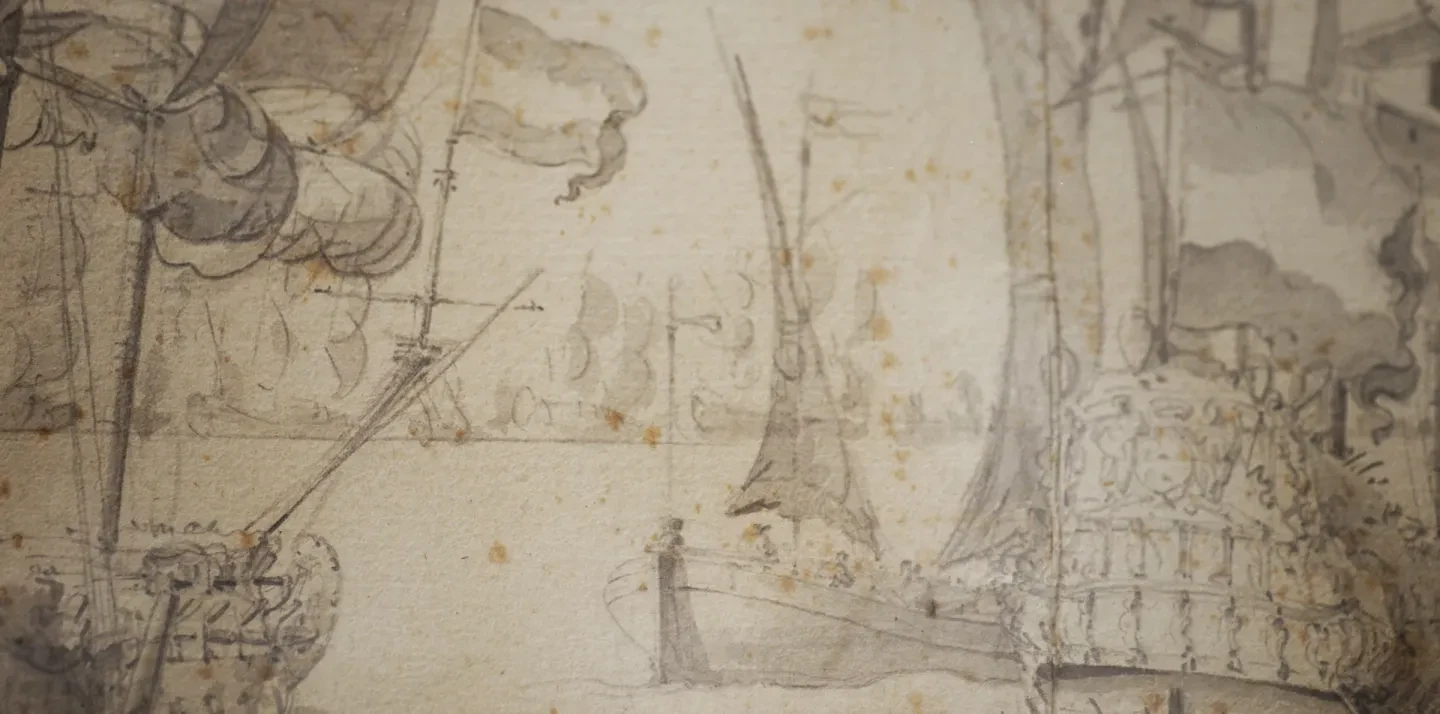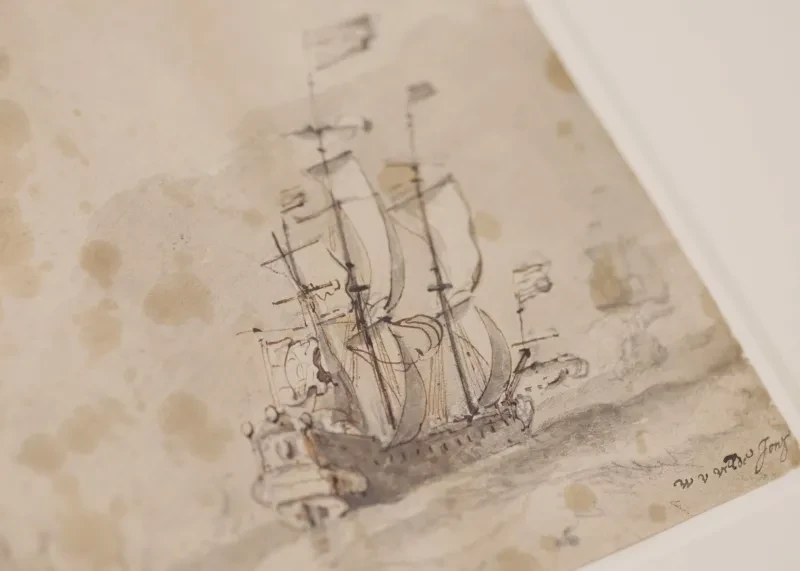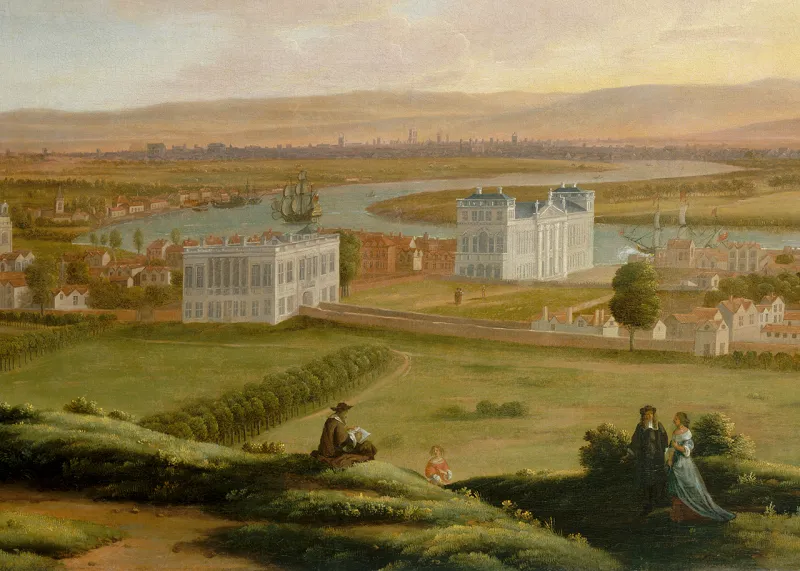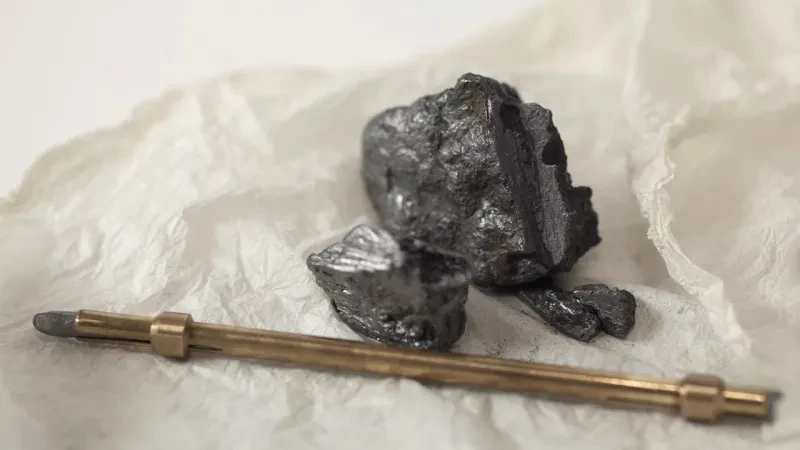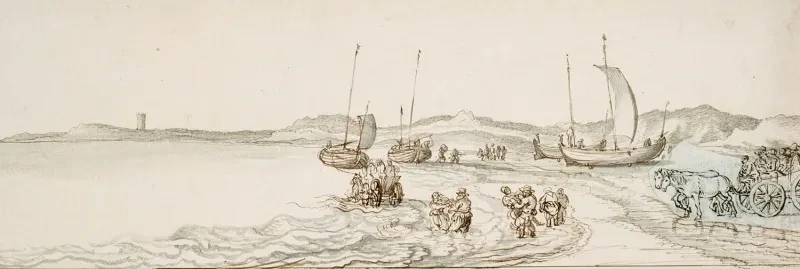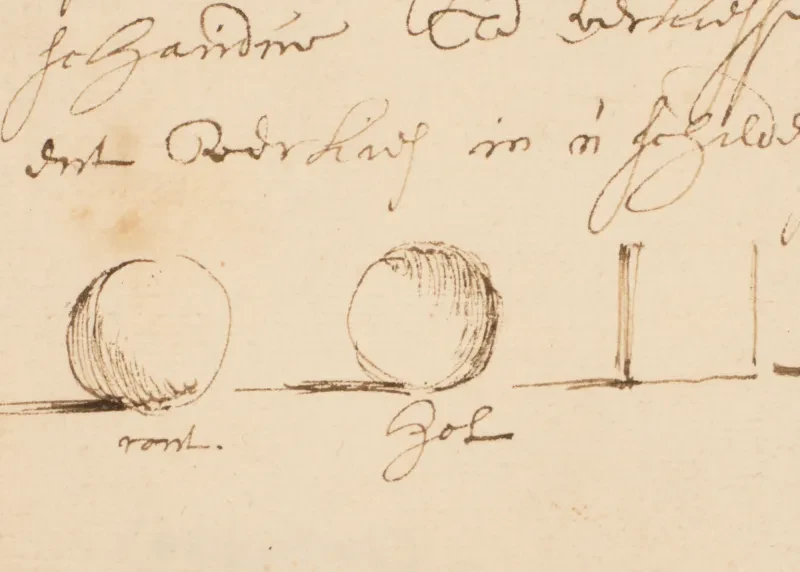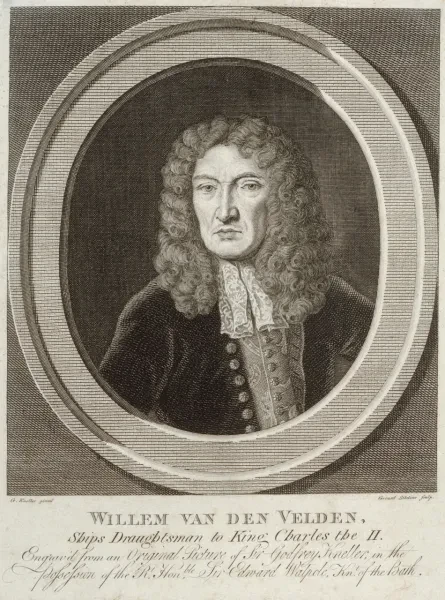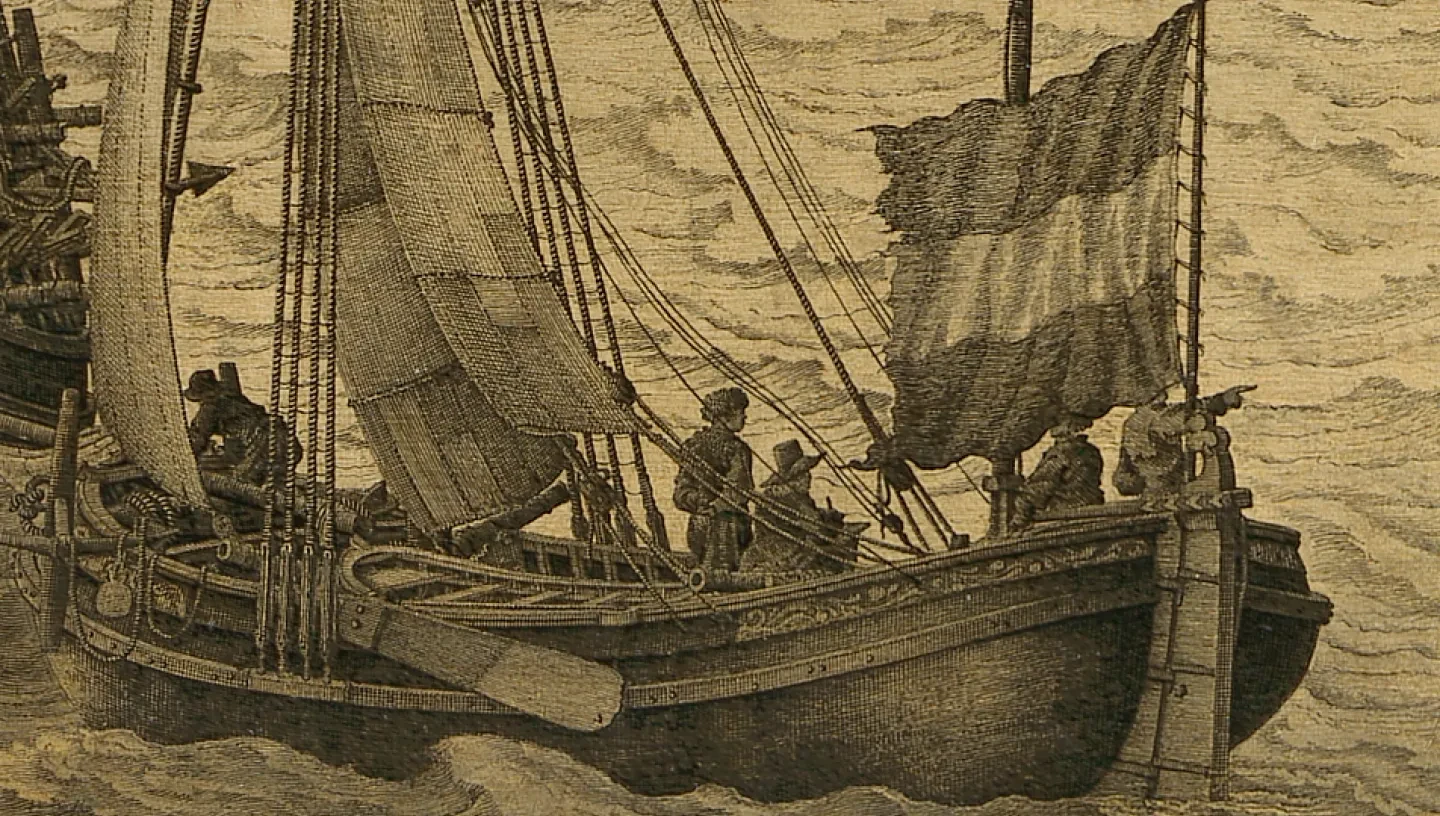
Not many artists would have ventured into the midst of battle to capture the action that unfolded, but Willem van de Velde the Elder was known for his courage and tenacity.
Van de Velde the Elder’s eyewitness drawings of naval battles earned him international renown. From challenging conditions to complex commissions, discover how Van de Velde created his works at sea.
Van de Velde the war artist
Van de Velde the Elder ventured out to sea on six occasions with the Dutch fleet and once with the English, recording on paper the chaos of naval warfare.
“Think about what it must have taken to sketch at sea in a small boat, known as a galliot, ducking and diving between much larger ships and seeing incredible human suffering at first hand,” says Dr Allison Goudie, Curator of Art at Royal Museums Greenwich.
“It would have been much like a photojournalist of today going into a war zone – such was the danger Van de Velde was willing to put himself in for the sake of his art.”
One drawing in Royal Museums Greenwich’s collections offers an intriguing glimpse into Van de Velde’s creative process on the water.
It depicts an action between the Dutch and combined English and French fleets at the first Battle of Schooneveld in 1673 – a major battle of the Third Anglo-Dutch War, and the only one Van de Velde sketched live on behalf of Charles II.

“This is an unadulterated example of Van de Velde’s work at sea,” Goudie says. “It’s so immediate, and it just shows the absolute skill that Van de Velde had to capture that authentic moment.
"It’s quite unusual for a drawing like this not to have been further worked up in the studio, so it gives us a real insight into Van de Velde’s sketches as they were, fresh from the moment of witnessing the battle.”
Like many of Van de Velde’s drawings, it was made using graphite, a versatile and portable material that was ideal for sketching at sea. “Another key property of graphite, at least for the Van de Veldes, is that it is waterproof – particularly useful when drawing at sea,” explains Emmanuelle Largeteau, Paper Conservation Manager at Royal Museums Greenwich.
“A pot of ink by contrast would be difficult to keep stable, and the artist would have to wait for it to dry before rolling up the work. Graphite is dry, waterproof and quick to sketch with.”
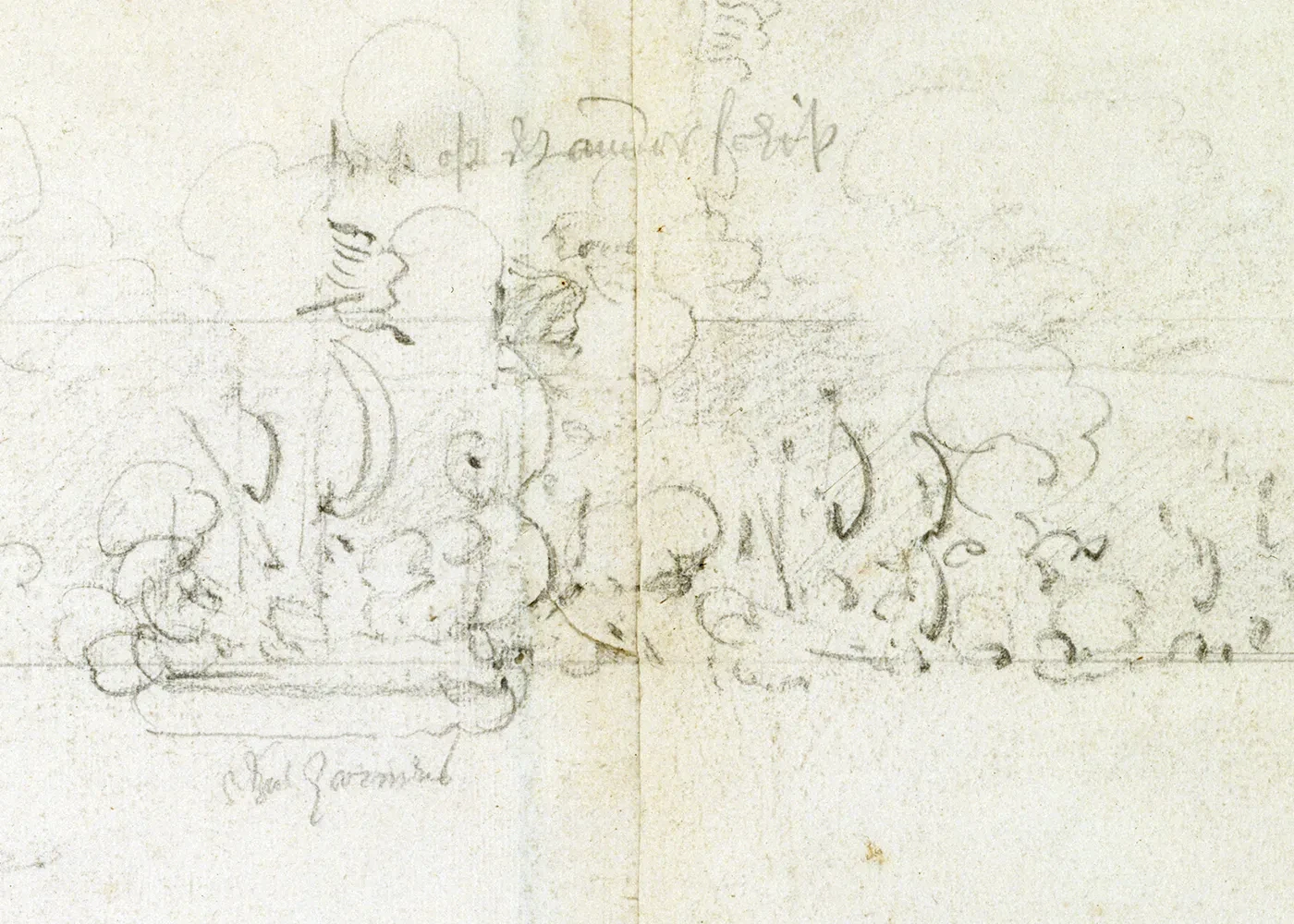
The drawing also provides valuable clues about how Van de Velde would have prepared for his work on the water.
“We can really see the various preparatory steps that Van de Velde has taken to maximise his chances of making good and accurate sketches at sea,” Goudie says. “Van de Velde has pasted smaller sheets together to create a panoramic view. He’s ruled this up with parallel lines, so he had a ready-made horizon line to work with.”
From sea to studio
Back in the studio, Van de Velde would take his sketches and work them up into large-scale drawings. This vast panorama, which depicts English and Dutch fleets on the day after the Battle of Solebay in 1672, is one such large-scale drawing based on sketches made at sea.
Commissioned by the Dutch admiralty, the work’s low viewpoint emphasises the immediacy of the action according to Goudie: “It’s extraordinary in its sheer breadth, and it gives this real sense of being there on the water.”
Van de Velde even draws himself into the action, depicting a galliot sailing between larger ships and a man in a broad-brimmed hat surveying the scene.
“Van de Velde was conscious to depict himself in his drawings and pen paintings at work at these battles, as if to say, 'I was here, I was truly present, and I witnessed this first hand',” says Goudie.
“Authenticity and accuracy were key to the Van de Veldes’ unique selling proposition,” Goudie adds. “This was central to their fame as the leading marine painters of their day.”
More than 350 years after their creation, the drawings are testament to Van de Velde’s determination to accurately record naval battles and maritime life.
Find more stories in this series
Tap the arrows to find out more about the Van de Velde drawings collection
